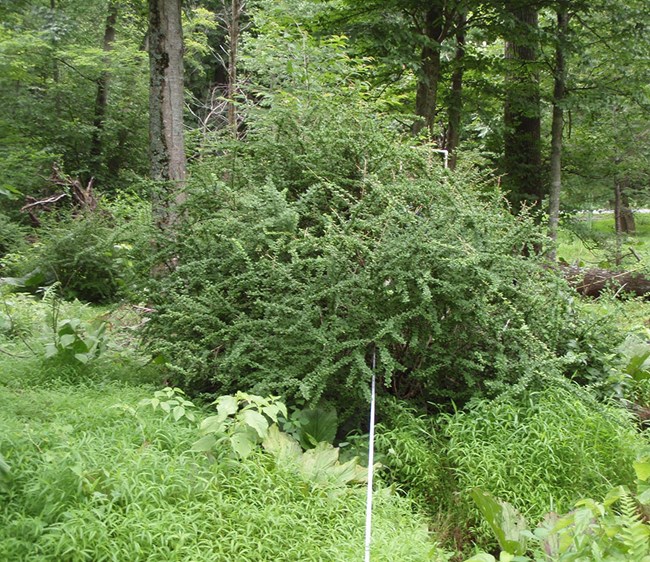A Quick Look
Invasive plants are pervasive and spreading, especially shrubs.

NPS
Importance and Issues
Invasive plants are pervasive and spreading in National Capital Region parks. By monitoring invasive plants, we can understand their impacts on forest and ecosystem health. Non-native invasive plants can outcompete native plants, change the physical structure of forests, and have cascading impacts on wildlife communities.
Invasive plant monitoring is a part of forest vegetation monitoring in the National Capital Region Network (NCRN). Jump to how we monitor invasive plants.
Monitoring Questions and Approach
- What invasive trees and shrubs are present and are they spreading?
- Are invasive vines spreading, and how are vines affecting trees they grow in?
- How does the spread of invasive plants affect surrounding forest vegetation and structure?
Detailed monitoring objectives from our protocol document are found here.
National Parks may request collaboration on park invasive species management, by visiting Invasive Species in Eastern National Parks (NPS only).
Source: NPS DataStore Saved Search 1276. To search for additional information, visit the NPS DataStore.
Source: NPS DataStore Saved Search 1303. To search for additional information, visit the NPS DataStore.
How We Monitor
Invasive plant monitoring is a part of forest vegetation monitoring which began in the National Capital Region Network in 2006. More than 400 sites are spread across all NCRN parks. Field crews sample more than 100 forest plots each year from approximately May through September. The cycle repeats every four years.
At each plot, field crews take the following measures:
- Record any presence of targeted invasive plants and targeted insect pests and pathogens
- Identify species of trees, shrubs, vines, and specific herbaceous plants
- Tag and record individual trees and shrubs
- Assess trees for canopy class and diameter
- Note any evidence of deer browse on trees or shrubs
- Count seedlings and record cover of herbaceous plants in 12 small quadrats
- Measure coarse woody debris along three transects
Last updated: January 9, 2024
